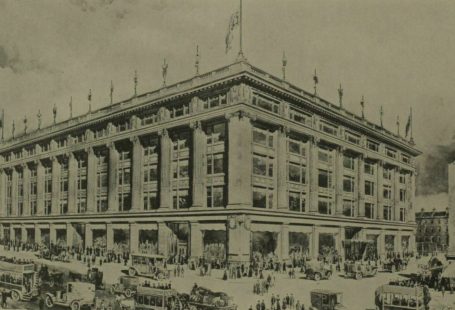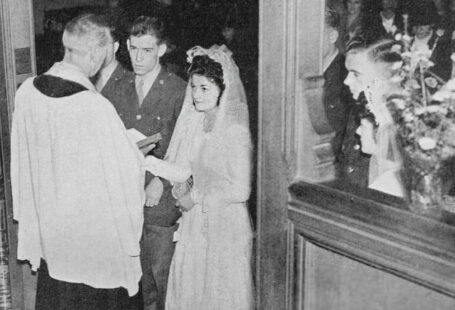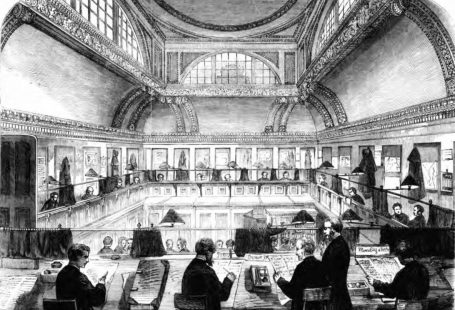THROUGH thy battlements, Newstead, the hollow winds whistle;
Thou, the hall of my fathers, art gone to decay;
In thy once smiling garden the hemlock and thistle
Have choked up the rose which late bloomed in the way.
So wrote the poet Lord Byron, inspired by his ancestral home of Newstead Abbey. Using pages from the British Newspaper Archive, this blog will explore Byron’s affinity with the ancient building, and how Newstead Abbey beat the odds to survive until the present day.
Want to learn more? Register now and explore The Archive
The Nottingham Journal (April 1924) tells us that ‘Byron was deeply and sincerely attached to his ancestral home.’ Newstead Abbey, founded as a priory of Augustine Canons in 1170 and representing one of Henry II’s penances for the murder of Thomas Becket, was possessed of a richly Gothic romance, which undoubtedly inspired the poet’s works.
Byron wrote often about his home, where he came to live in 1808. One of his works on Newstead Abbey included ‘a long elegy in which the fortunes of the ancient priory from its early days down to his own tenure are traced with mingled pathos and regret.’
Illustrated Times | 16 June 1860
In a more material sense, actual features of the Abbey appear in his writings. As The Sphere (April 1924) relates, the Gothic fountain in Newstead’s Cloister Court appears in Don Juan:
Amidst the court a Gothic fountain played
Deck’d with carvings quaint
But Newstead Abbey in the early nineteenth century faced problems, much like many country houses were to face over one hundred years later. The Nottingham Journal reports in article entitled ‘Newstead Abbey in its Glory and Desolation’ that when Byron came to live at Newstead ‘the place was fast falling into decay…Byron saw his home as a ruined, desolate habitation, the glories of the past almost wiped out.’
Newstead Abbey in its Gothic glory | Illustrated Times | 16 June 1860
Indeed, one friend remarked that it was a ‘straggling, gloomy, depressive, partially inhabited place.’ But it was precisely this gloom, this degradation, that inspired Byron, causing him to write about the ‘Fast-falling, once-resplendent dome.’ He revelled in the Gothic surrounds of the weed encrusted turrets, which for him were the perfect setting for much of his poetry.
And Byron brought life to Newstead Abbey – his coming of age was celebrated there in January 1809 (Illustrated London News, April 1924) – and of course, there were the rumours of the wild parties that he held there – he was, after all, ‘mad, bad and dangerous to know.’
Byron left behind at Newstead something rather sentimental, however, other than his poetry. That was the tomb for his beloved dog Boatswain, upon which Byron wrote an inscription, lauding his pet’s ‘courage without ferocity.’
And even though Byron had pledged that ‘Newstead and I stand and fall together,’ The Sphere, in a special article marking the centenary of the poet’s death, explains how Newstead Abbey was sold to one Colonel Wildman in 1818 for 90,000 guineas.
Lord Byron would be dead six years later, dying in Missolonghi in Greece after travelling there to fight the Turkish invasion against the Greeks. But his connection to Newstead Abbey, and the building itself, were to survive into the twentieth century, when many such buildings began to fall into disrepair, and many faced demolition, especially in the 1950s.
Lord Byron aged 19 | The Sphere | 24 April 1924
But things did not look so certain in the 1920s. The Sheffield Daily Telegraph in January 1921 tells of a sale held at Newstead Abbey, where a couple of Lord Byron’s cupboards were sold to Mr W.S. Gibbons of Nottingham for 32 guineas each, amongst other items.
In 1927, The Bystander warns that ‘it will come to a shock to lovers of Byron to hear that it is proposed to turn Newstead Abbey into flats,’ before concluding, as a sign of the times, that ‘this seems to be the fate awaiting more than one big historic house.’
The Sphere is more realistic a month later, featuring photos of ‘the old butler’s pantry in process of conversion into a modern kitchen.’ Indeed, the newspaper claims that ‘the greatest care is being taken not to mar the beauty of the historic mansion nor to desecrate its memories. It is merely being transformed into a dwelling-place for three families instead of one.’
A butler’s pantry in the midst of conversion | The Sphere | 19 February 1927
But the more historic parts of Newstead Abbey still risked falling into disrepair. In 1930 it looked as though the National Trust would take over its upkeep, the building having been purchased by philanthropist Sir Julien Cahn. But as the Nottingham Evening Post relates, the National Trust were forced to abandon such a scheme, its architects having advised that ‘a considerable sum would be required to form an endowment fund for the upkeep of the property.’ Such a sum would not, allegedly, be produced by ‘fees paid by visitors.’
All was not lost, however. On 16 July 1931, Newstead Abbey was presented by Sir Julien Cahn to the City of Nottingham, in order ‘to be maintained in perpetuity for the enjoyment of the public’ (Illustrated London News, July 1931). 16 July was a significant date; Byron was buried on that day in 1824 at Hucknall church.
Yorkshire Post and Leeds Intelligencer | 26 June 1931
Present at the landmark ceremony was the Greek Prime Minster Eleftherios Venizelos, who stated that he had ‘come to bring to Byron the deep and sincere homage and the gratitude and remembrance of his whole nation. Nobody, he said, could think of a free Greece without thinking at the same time of Lord Byron.’
Newstead Abbey’s last owner, Charles Ian Fraser, was also there to hand over some important Byron-related artifacts. And one year later, the Nottingham Evening Post reports on the success of the venture. Over 30,000 people had been to visit Newstead Abbey, with the entrance fees ‘proving fully sufficient to maintain the abbey and the 20 acres of ground.’
Illustrated London News | 25 July 1931
The disused chapel had been opened to once again hold services, whilst a room with a ceiling by Inigo Jones was opened to the public. Thus, the place that gave Byron such inspiration could be visited and enjoyed by many thousands, and it remains open to the public to this day.
You can find out more about Newstead Abbey’s fascinating history in the pages of our Archive – why not start searching today and see what you can discover?














